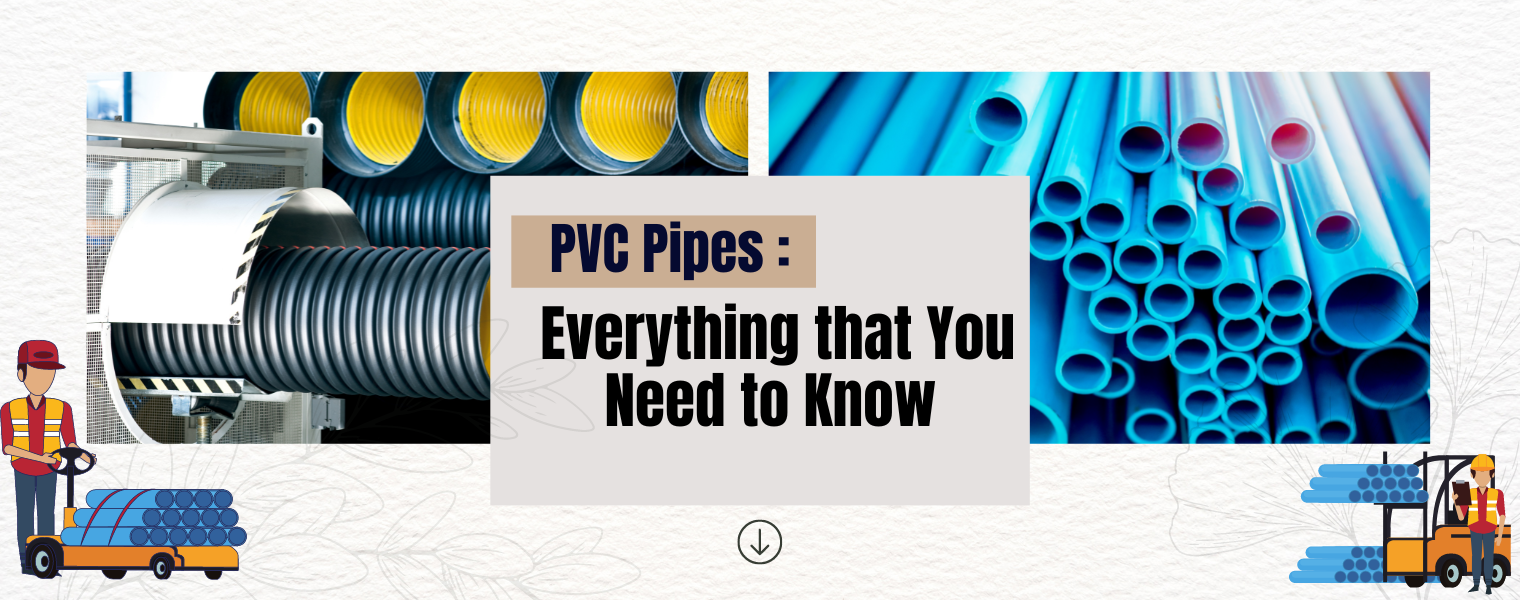
PVC, the third most utilized synthetic polymer, is produced and consumed at a pace of 40 million tons annually globally. Its primary use is as a water conduit in diverse scenarios.
What is it made of that makes it such a much-desired product? Its primary component is polyvinyl chloride, which has a wide range of advantageous physical and chemical features that make it the best option for a secure and affordable channel in a variety of infrastructure applications, including supplying water.
PVC pipes are extensively used in the water supply industry. PVC pipes make up the majority of the water main pipelines. PVC pipes are also used in large-scale irrigation systems and sanitary sewer networks.
PVC pipe are utilized in plumbing, drainage, agricultural irrigation, power & telecommunications systems, and the ductwork of heating and cooling systems in both home and commercial settings.
Utility companies employ underground PVC pipes, which have a bigger diameter and a thicker wall, to bring drinking water to a network of homes and businesses.
Sewage systems also use a network of PVC pipes that are buried underground. They are employed to drain rainwater from roofs and other buildings. Additionally, they are employed in the construction of building fire sprinkler systems and sprinkler systems for landscaping.
HVAC (Heating, Ventilation, and Cooling) systems use pipes manufactured of CPVC pipe, a PVC alternative, to convey hot water. PVC pipes are used to transport cold water in HVAC systems.
Agricultural irrigation also uses PVC water supply pipes. Compared to open channel systems, it typically conserves 30 to 50% more water. Additionally, it can stop cold flooding, swamping, and soil salinization from happening. The PVC water pipe network has a high land usage rate since the majority of it is buried underground.
The PVC pipeline water supply system is adaptable, practical, simple to automate, and ideal for a variety of soils and terrains. Additionally, irrigation efficiency is great, water supply is quick, and maintenance is simple.
A variety of pipelines and construction projects can benefit from the usage of PVC pipe fittings such as bends, branches, valves, brackets, and clips. They can be used to modernize outdated pipeline systems that may have grown rusted over time. The integrity of the joints is primarily where pipeline networks are weak. The junction points can be strengthened using UPVC pipes, preventing the need to redesign the complete network.
PVC Pipe is hard and brittle in its raw state. By adding additives, it is prepared for a variety of commercial and industrial uses. It becomes softer and more ductile due to plasticizers. Its resilience to high temperatures is increased with heat stabilizers. It is resistant to intense and prolonged exposure to sunlight thanks to UV stabilizers.
Unplasticized PVC (UPVC), sometimes known as PVC in its natural state, is UPVC. This indicates that the PVC compound has not been given a plasticizer. Rigid PVC is another name for unplasticized PVC. The most used PVC type is UPVC which is used for industrial applications, sewage and subterranean drainage, transportation of drinking water, soil and garbage, and pipes and fittings. The UPVC pipe material is hard and brittle without softening chemicals. This prevents it from being used for pipes and other flexible applications, although it still has a useful application in building. It is utilized as siding or weatherboarding material on the external walls of dwellings in many different nations because it is resistant to prolonged exposure to heat and sunlight.
UPVC pipes and fittings offer a number of advantages. They are an economical, lightweight, and safe option for transporting drinking water. Great mechanical performance, good durability (at least 100 years for subterranean pipes), high chemical resistance, and resistance to UV exposure are examples of technical qualities. Additionally, UPVC pipes are 100 percent recyclable and have positive environmental qualities.
CPVC pipes, A PVC version known as CPVC has a higher chlorine content. Its temperature resistance threshold is higher. In contrast to PVC, which can endure temperatures of up to 140 F before melting or failing, it can withstand temperatures of up to 200 F. For the transmission of hot water in HVAC systems or commercial settings, CPVC is preferred. In many instances, CPVC is required for this use by building codes.
Polyfab PVC pipes are the most widely used material for sewage lines, electrical ducting, and drinking water transportation. Plastic pipes have been shown to be the best items for the large range of commercial, residential, and industrial applications used today due to their resistance to a wide range of chemicals, heat, and pressure.